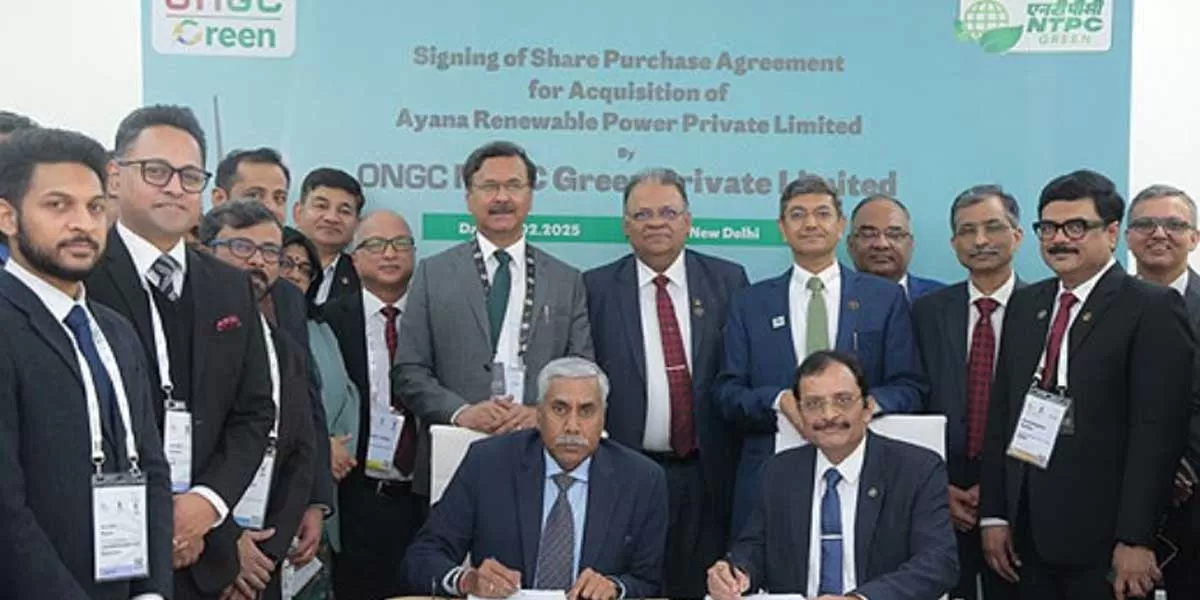Government schemes such as PMAY, Make in India and Swachh Bharat are expected to generate growth for the ceramic tiles and sanitaryware industry. Indian tiles industry estimated at Rs.350-400 billion, likely to grow around 8-10% over three years. Sanitaryware industry estimated at about 45 billion, growing at around 10-12% annually.The industry is focusing on environment-friendly products along with sustainable processes and technology.The market is booming for tiles and bathroom fittings. With an array of designs, sizes, price points and finishes, customers have a variety to choose from, says Subrata Basu, Vice President-Design, Nitco. These are showcased in larger showroom spaces across the country.“The tiles industry in India will be around `350-400 billion and is likely to grow around 8-10 per cent over the next two to three years,” says Kamlesh Patel, Chairman and Managing Director, Asian Granito India (AGIL).“The tiles market is growing on low single digits,” says Alok Agarwal, CMO, Orient Bell. For the company, the North is doing well, followed by the East. “It is a buoyant market with demand continuing to rise.” “The sanitaryware industry is estimated at around Rs.45 billion and is growing at around 10-12 per cent annually,” adds Patel. According to him, the Morbi cluster in Gujarat accounts for about 65-70 per cent of India’s tiles and sanitaryware products in volume, with over 800 factories (60 per cent organised, 40 per cent unorganised).Tracking trends, Dinesh Vyas, Marketing Head, H&R Johnson, says, “Recently, the product mix has moved towards higher-value products with better features and advantages. In spite of temporary ups and downs, the market remains lucrative in the long term and we are working to increase our market share in premium products.” The company recently launched the Johnson International collection of sanitaryware and bath fittings in the affordable-luxury segment. High on demand Government schemes such as Pradhan Mantri Aawas Yojna (PMAY) and Swachh Bharat are expected to play a pivotal role for the building materials segment, with cement, tiles and sanitaryware, paints and construction material companies all standing to benefit. Further, stricter implementation of GST will enhance growth prospects, especially for organised players. Also, the upward revision in customs duty from 10 per cent to 15 per cent on ceramic roofing and wall tiles would help domestic tile manufacturers and reduce import dependency.“As the government and local bodies are spending more on infrastructure and housing projects, demand from small towns and Tier-II and Tier-III cities is increasing across sectors,” says Patel. While showrooms are part of the strategy to increase retail sales through direct customer interaction, the company aims to increase the retail share to 50 per cent by increasing the span of retail outlets.Traditionally, CERA has been doing better in the South, West and North, says Atul Sanghvi, Executive Director & CEO, CERA Sanitaryware. He adds, “With the government’s affordable housing initiative, all areas are sure to become equal in performance.”Vyas adds, “We have pan-India operations and are making efforts in all regions. However, the East and South have performed well recently. With upcoming new product portfolios, we are confident of doing well in other regions and moving from the metro to the rural market.”While Orientbell has significant traction across regions of India, Agarwal shares, “The North tends to be more buoyant with a higher recognition of branded products.” What’s new“Current ceramic tile trends include varied styles like graphic patterns, matte finish, neutrals and dimensional tiles,” says Ishvinder Kaur, Creative Director & Founder Principal, IV Partners. New-era designers use luxurious ornate bathroom fittings like smart sinks with water-saving sleek faucets, infrared controls for WCs, urinals, feature touch push knobs for low transmission noise, half-turn mixers, humidity and salt-resistant fixtures. “We use similar products in our projects.”According to Jimmy Mistry, Chairman & Managing Director, Della, “Large tiles in large formats are trending in India. My entire line of vitrified tiles is manufactured with different companies who are manufacturing some of the finest machinery and technologies like SIS technology and imported glaze.” Nitco – a Green Pro-certified company in the tile category – recently launched a range of artisan design hexagon tiles – wooden-finish plank tiles that can replace natural wood. Basu adds, “We have a range of large-slab sized tiles that replicate granite.” Further, the company has an exotic range of natural marble, mosaic and tiles as surfaces, all crafted in its state-of-the-art plants ensuring the best quality standards.AGIL recently ventured into the sanitaryware segment with 160 SKUs in products including washbasins, WCs and urinals. “We have adopted an ‘outsourcing model’ where we are sourcing from domestic markets and importing from Europe and China in the first phase,” explains Patel. The company will set up its own manufacturing facilities in coming years. And apart from adding more designs in its existing tile range, it has launched MarbleX tiles of 1,200 × 1,800 mm. Akin to original Italian marble, Grestek MarbleX aims to create a style that is artistic yet natural.Orientbell has recently launched the Valencica range, inspired by the design and architecture of the Spanish city. The tiles are printed using high-definition 400 dpi printers, the best in the industry. Available in a standard size of 60 × 60 cm, the tiles are weather-resistant, with properties like low moisture expansion, thermal shock resistance and frost resistance, making them ideal for both indoor and outdoor applications. Focus on sustainabilityThe industry is focusing on environment-friendly products along with sustainable processes and technology. Ceramic tiles are environment-friendly as they are made of clay, sand and glass, points out Kaur. “With most made out of recyclable content, they reduce energy use by keeping the region cool even during high temperatures.” Also, most sanitaryware products today come with water-saving technology. As Mistry says, “All WCs currently used with flush tanks consume less water. Dual flushing systems, especially, use less water compared to the flush valves of the past.” With most of these products being manufactured in India, and coming from within a 500-km radius, the carbon footprint is also reduced.Sanghvi shares that CERA, too, has focused on developing water-saving products. “We modified the designs of WCs, because of which we are able to send less water down the drain.” “Our ‘cool-roof’ tiles, thinner and robust large Porselano glazed vitrified tiles and multiple collections of Endura Industrial tiles feature superior technical parameters to perform and intervene less in nature by replacing natural stone,” says Vyas. Similarly, in sanitaryware, the company has options that use less water. “Johnson products are manufactured in highly energy-efficient factories and we also recycle to the extent that technology supports.”For its part, AGIL offers the market the eco-friendly Eco-Bianco tiles range for terrace. As Patel says, “These solar reflective roof tiles have SRI of 87.”Orientbell’s manufacturing units are ISO 14001:2015 certified (the most complete global expression for environment-friendliness) and it has been awarded OHSAS 18001 certification for health and safety standards. “No wastewater is ever discharged from our factory,” affirms Agarwal. The price bandThe past few years have been challenging for the tile industry, with overcapacity, rise in input costs, pricing pressure from unorganised players, dumping from China, GST and demonetisation.“We see that the worst is over in terms of pricing pressure and expect 10-12 per cent growth in 2019-2020,” predicts Patel. He adds that, at present, input costs are increasing owing to multiple factors. “So, like other organised players, we are compelled to pass on the burden on end-users. However, customers can choose preferred products according to their budget.” Sanghvi sees pricing under pressure, owing to sluggish demand consequent to slowdown in housing construction.Meanwhile, Vyas points to the ceramic tile industry as unique among building materials in the sense that the cost of basic products has consistently come down. “Pricing is a matter of acceptance of the product at a value customers perceive. In most cases, it is relative in nature. However, comparison parameters are not in place in the absence of required domain knowledge.” For tiles, the price is generally referred to in terms of size and whether they are vitrified. Vyas sees this approach as factually inaccurate. “Overall, prices are under pressure in basic ceramic tiles as the competition is really fierce,” he insists. The impact of initiativesThe Make in India drive, Housing for All, Swachh Bharat and the Smart Cities mission covering 100 cities in five years are expected to generate volume-driven growth, resulting in economies of scale.“Almost 63 per cent of India’s rural population is living in homes with mud flooring,” says Patel. “Per-capita consumption is at 0.59 sq m versus the global average of 1.40 sq m. The tiles market, thus, holds immense potential.” He adds that with sustained public and private measures in recent years, coupled with improving standards of living, the quality of sanitation has increased manifold.” Consequently, there is a huge market for products utilised in the construction of public sanitation facilities as well as domestic bathrooms and toilets. The need to make affordable sanitaryware products available is now paramount.A leading integrated building materials company, Prism Johnson, including its sister concern Ardex-Endura (a JV), provides construction-related products such as cement, RMC, tiles, sanitaryware, engineered stone and construction chemicals. Overcoming challengesAny successful design is an amalgamation of the client’s desire and the architect’s vision. “The challenge is more concentric around understanding the psychology ideal for the client and carefully blending it with the design technicality,” reasons Kaur. And cost plays an integral part depending upon the typology of the project and the extent to which the client wants to extend design boundaries.In Mistry’s view, the key challenge for any designer is “to balance form and functionality”. He adds, “The size of our bathrooms and washrooms is always compared.” So, people pick up global images, where bathroom sizes are way larger than what we see in India right now. The same goes for fixtures like shower heads. Another major challenge is slowdown in housing construction. However, as Sanghvi says, “The latest Budget with a boost to affordable housing will certainly herald a brighter future.”Another point to consider is that ceramic tiles, once considered a luxury, are now a basic construction element. In fact, they are cheaper and more environment-friendly than marble and granite. “This transition requires consideration in terms of taxation as it will further help initiatives like Swachh Bharat and affordable housing,” avers Vyas. Further, transportation, packaging, poor material handling and road conditions result in much wastage, coupled with factory production wastage. “The industry has to evolve to better processes,” says Basu. Also, the industry struggles with spiralling price cutting and no consensus to improve work conditions. He adds, “The industry body has to support and drive better work practices and skilled workforce for this sector to thrive.”To conclude, Patel shares his recommendations for industry growth:We expect the government to continue its special thrust on the rural economy, social-sector reforms, infrastructure and housing. It should adopt softer interest rates for now and roll out a bigger tax benefit for individual and corporates aiming to increase the investment-capex cycle, boosting demand and GDP growth. While the Indian ceramic industry will aim to be green and environment-complaint, it wants the government to ensure maximum compliance for GST and strict implementation of the e-way bill.As tiles are an essential commodity for housing and sanitation, we request the government to lower the GST to 12 per cent from the current 18 per cent. Power and fuel (largely gas) costs account for 20-25 per cent of revenues for the industry and we would like the government to rationalise this by lowering duties. We welcome the Budget proposals for the growth of the tile and marble business. The proposed increase in basic customs duty on tile and ceramic products to 15 per cent from the existing 10 per cent will safeguard the domestic industry from cheap imports and strengthen it further!

















